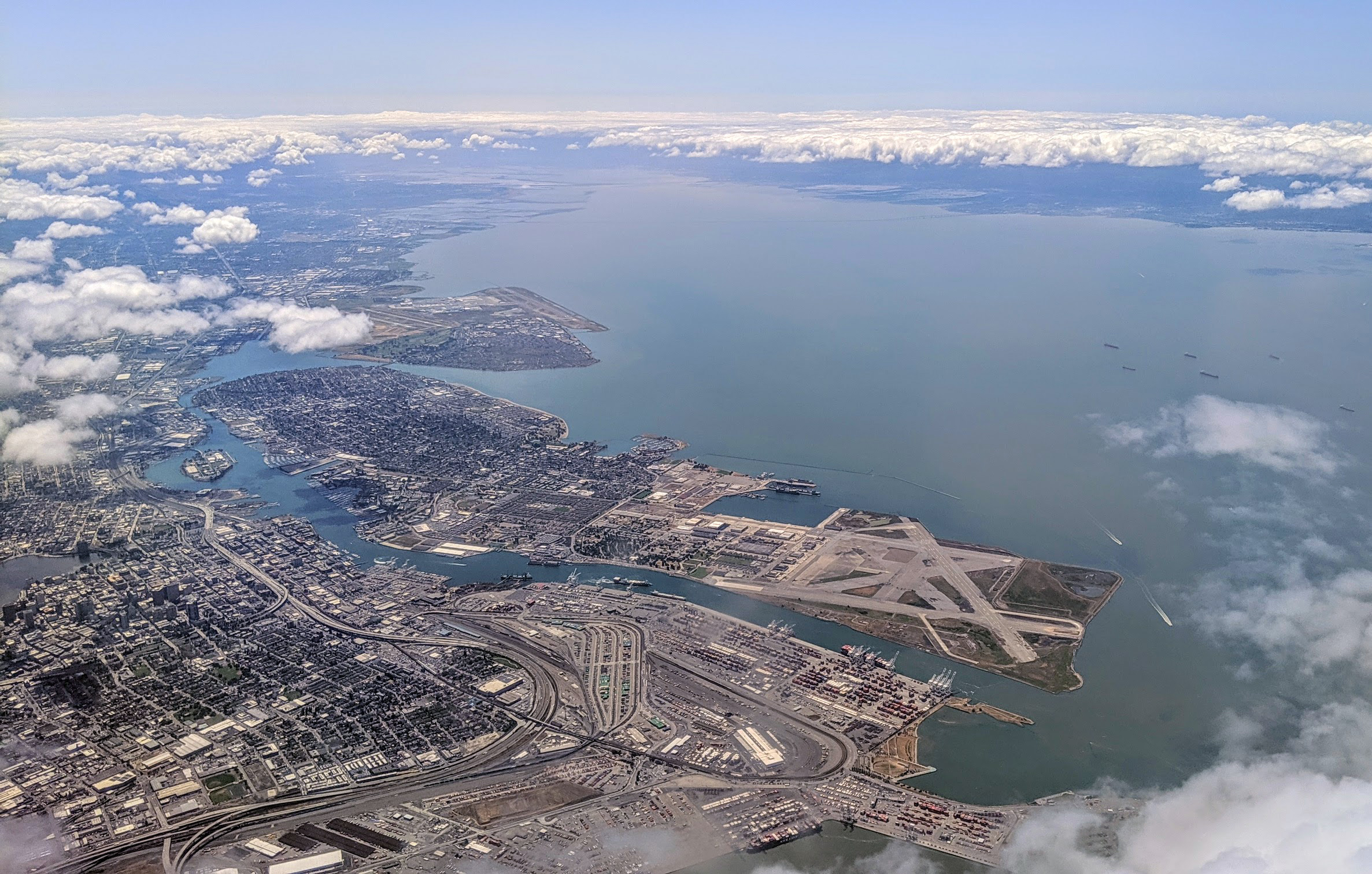In the latest dispatch from the world of speculative California urbanism, a dude named James recently announced his vision for “Frontier Valley,” an AI-focused “city” on the former naval base in Alameda. It would be independently governed by “America’s most badass deep tech founders.” Despite getting coverage in the San Francisco Chronicle, this proposal demonstrates only that he has a YouTube account -- not that he is a serious developer or social entrepreneur. He appears to have little funding or credentials, and the City of Alameda has never heard of him.
(Editorial comment: I can think of nothing less “badass” than being a “deep tech founder.”)
Our bro James seems to be inspired by the idea of “Freedom Cities,” which our real estate developer president has been pushing since 2023. An invaluable rule of thumb is that when something has the word freedom in its name, it is probably ghastly. And ghastly Freedom Cities are. They would essentially be business and industrial parks where tax burdens and regulations would be limited in order to promote commerce and some bizarre version of the good life.

Not pictured, to the west: an actual economic powerhouse.
“Freedom Cities” is a domestic rebranding of charter cities, the controversial, but extensively thought-out concept popularized by economist Paul Romer. What Romer proposed some 20 years ago--inspired in part by colonial Hong Kong--was the establishment of new cities in less developed countries that would be administered, regulated, and funded by developed countries. The point of this voluntary imperialism would be to establish commercial centers that could boost the economies of the host countries while avoiding corruption.
Here in the homeland, the American Enterprise Institute’s “Homesteading 2.0” vision for urban development and housing calls for Freedom Cities to cluster in the West, on the outskirts of existing cities. What initially seemed like pseudointellectual blather has become much more realistic with the recent (stalled) effort to put millions of acres--or potentially hundreds of millions, depending how you read the bill-- of Forest Service and BLM land up for sale. According to a 2023 announcement, the president envisions ten Freedom Cities nationwide. Who knows whether that’s a serious proposal or just a round number that flopped out of his mouth.
The flaw in the Freedom Cities concept, is that--unlike, say, Honduras, where the first version of a charter city is being developed--the United States is already supposed to be free and functional. The United States has thus far proven itself to be the most muscular capitalistic enterprise in the history of the world.
Doubtlessly, any Freedom City would be woefully homogeneous. Judging by the administration's recent behavior, people of Hispanic descent, women, and the other hardworking, competent, intelligent people who traditionally make cities great would likely not enjoy Freedom Cities. Instead, we can instead imagine a population that is wealthy, white, and probably male, given the rise of crypto-bros and tech-bros. I’m imagining a municipal-scale frat party dominated by discussions about blockchain rendered with the earnestness that we ought to be assigning to things like world peace, clean energy, world hunger, and actual freedom.
I suppose Freedom Cities seem pretty free when they don’t have children to educate, elders to care for, crime to fight, and marginalized people to lift up.
Freedom Cities would funnel capital and talent away from the cities we already have, thus creating a self-fulfilling prophecy. They could do to the United States what colonists of previous eras did to their host nations: plunder. They invoke the perverse idea that “building something from scratch” or “innovating” is better than the status quo. This is, of course, how American cities were once destroyed, replaced by the “innovation” of freeways and the disgrace of slums.
Freedom Cities probably will not be built in our lifetimes, or ever. Instead, they exist as a concept to make existing cities look bad. Of course, it’s easy for reality to look bad when its foil is a combination of conjecture, sophistry, and pure fantasy.
The one thing for which Freedom Cities are useful is to put real cities on notice. Even if Freedom Cities don't happen, existing cities can be sure that they're going to get no help from D.C. anytime soon. We are on our own.
As I wrote last year, the California Forever proposal -- which is light-years more mature than “Frontier Valley” or any other version of Freedom Cities -- makes a nominally progressive case for a new city, imagining a walkable, medium density, Italianate real estate development that can add to the state’s housing stock and might actually be pleasant. Freedom Cities, though, are not appealing so much as they are menacing. But, we should not look away.
Per the recent “abundance” discussions, we need to consider what will actually make cities function more effectively. We need to rewrite codes. We need to delete obsolete regulations. We need to recognize that culture and technology have changed and that our cities, difficult as it may seem, can adapt, especially when the federal government is bulldozing them, defunding them, or otherwise telling them to drop dead. We need to help the vulnerable thrive, and we need to figure out how unions and capitalists can find common ground.
Freedom Cities also remind us that cities need to invest.
They should invest in infrastructure and private development, of course. But that’s not all. They must invest in people.
That partly means raising municipal salaries and adopting hiring practices to get better people to work for the cities and not for, say, finance firms. Of course, there are incredibly smart, dedicated people in every city. But when public salaries cannot compete with those of the private sector, and when hiring practices are so rigorously objective that they leave little room for brilliance, ambition, or creativity, then top talent will go elsewhere--even though governments are, arguably, much more complex than even the largest companies. (Side-note: The success of Zohran Mamdani in New York City doesn’t mean that Democrats are all socialists. It means that, rather than running for office, many of the capitalists are off doing capitalist things.)
I’m not saying “government should be run like a business.” That’s nonsense. But, government should have the ambition of a business. If California’s civic sector expressed a fraction of the confidence in the abilities of government as technolibertarians do in its failure, we’d all be at brunch right now.
We must get this right. City dysfunction is partly responsible for electing MAGA. Cities became a punching bag and a punch line in the campaign. Real estate costs have driven people out, diminishing cities’ electoral and economic influence. Many of the qualities that make cities great are the very qualities that MAGA demonizes.
The residents of urban America can tap into their MAGA resentment and make their places better through elbow grease, new thinking, smart voting, and a sense of solidarity--all of which is readily available to them, from the ballot box to the community meeting to the vacant lot and everywhere in between. We don’t need new cities; we need better cities.
As for “Frontier Valley”: it, and the rest of Alameda, could be underwater in 50 years anyway. It would be nice if MAGA would do something about climate change.
Image Source: Dicklyon, via Wikipedia.


